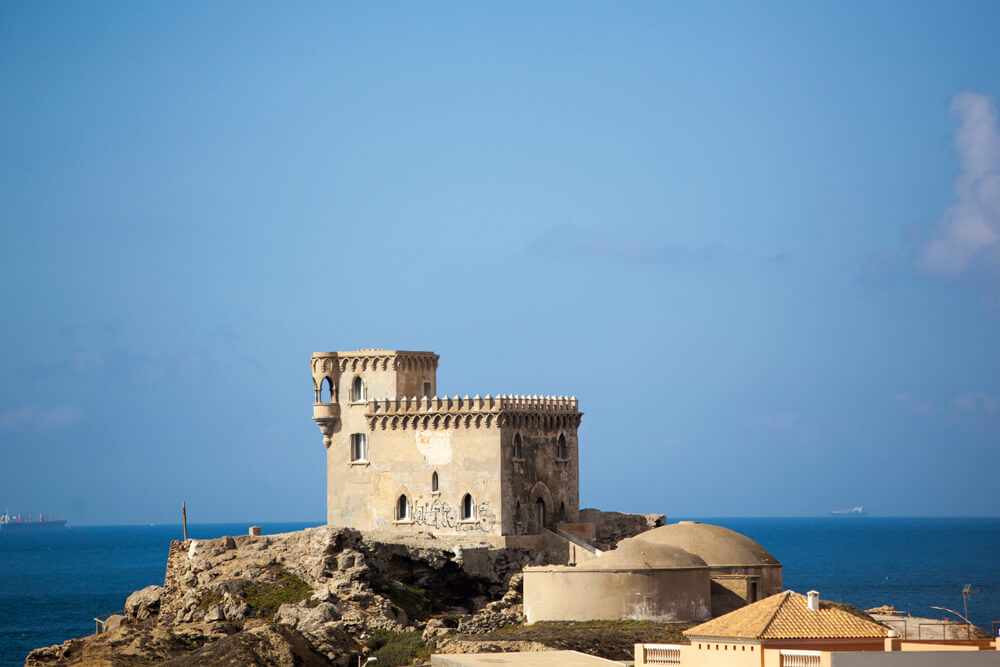Gira tu dispositivo para una experiencia óptima
Gira tu dispositivo para una experiencia óptima

6 días

Naturaleza

Cultura

Cádiz urbano
Enter your email address and in a few seconds you will have the experience on your mobile so you can see it whenever you want.
We have emailed you the experience; enjoy Cadiz like never before.
Don't you get your experience?
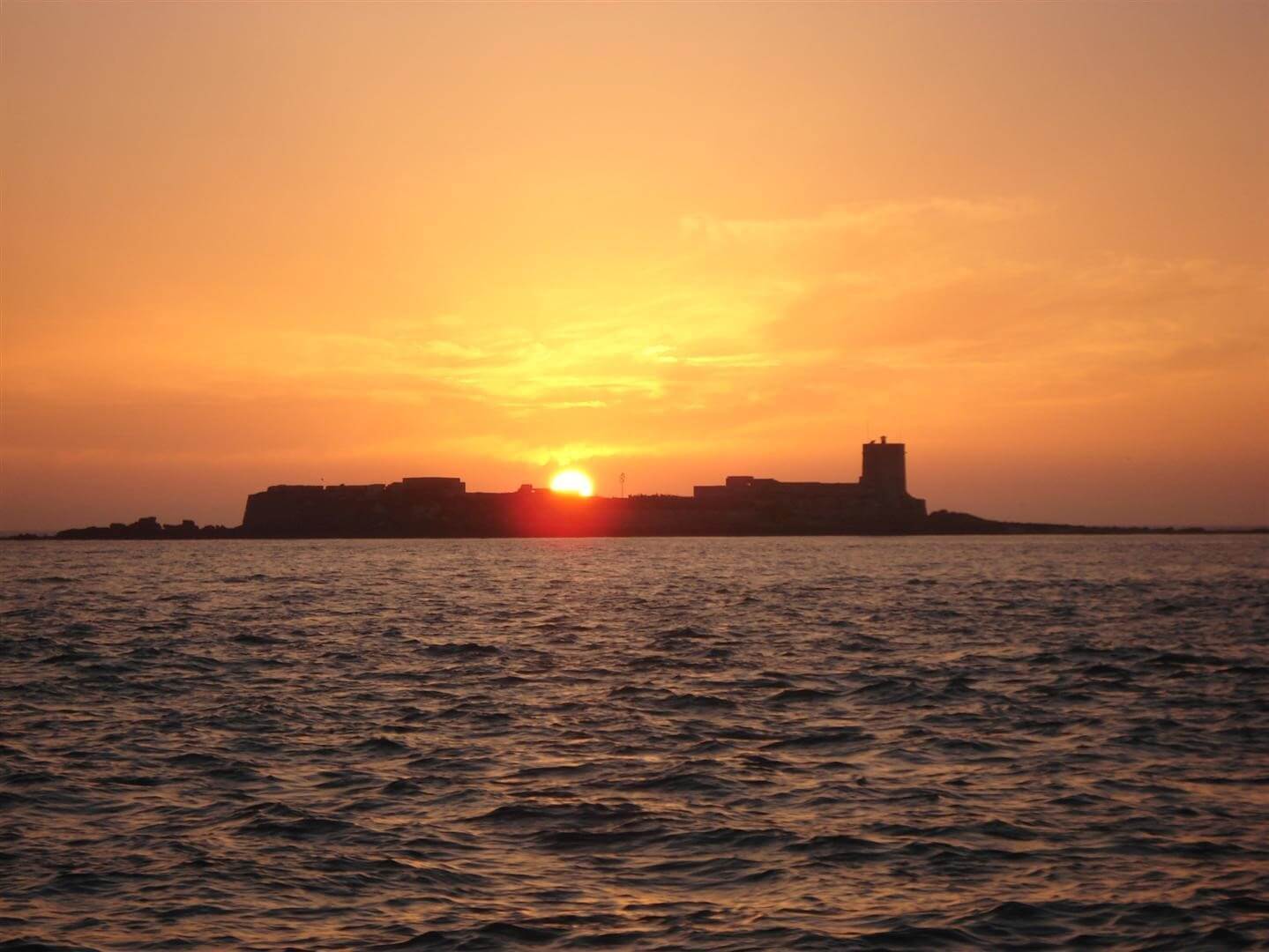
The province of Cadiz is teeming with defensive systems and fortifications, so if you like castle tourism, put a tick next to Cadiz on your map of holiday destinations. We've got castles of all kinds, shapes, forms and states. You can find them in the heart of old city centres and in almost inaccessible rural nooks and crannies. Right next to the beach and on mountain tops. Some are perfectly preserved while only a few remaining bones of others are visible. But each one holds the souls of those who lived and worked there to make the province of Cadiz a better and richer place. Are you coming?
Our trip starts in Olvera. The first thing to do is leave our suitcases at the Sierra y Cal hotel (http://www.tugasa.com/hotel13_1.php), where we'll be spending the night. This highland town is regarded as the gateway to the white villages of Cadiz, which get their name from their bright white facades. In the Middle Ages, Olvera was one of the most important settlements in the area because of its location on the frontier between two kingdoms, and it is still an administrative centre for the region.
The castle of Olvera (12th c.) was part of the defensive system of the Emirate of Granada. It occupies the topmost point of an area made up of a peak that the castle's shape was adapted to. It can be seen from far away, competing for the grandest view with the church of Nuestra Señora de la Encarnación (19th c.). The castle offers fantastic views of the surrounding fields and the Sierra de Grazalema Natural Park. It later became a bastion for the Kingdom of Castile. Entrance is 2 euros and includes a visit to the Casa de la Cilla interpretation centre (http://turismolvera.com/es/que-visitar/patrimonio-monumental/#http://turismolvera.com/es/quevisitar/centro-cultural-de-la-cilla-museo-la-frontera-y-los-castillos/). The centre explains the functions of frontier castles and defensive systems in great detail. Very useful for understanding what we'll see in the next few days. There are also items on display found in archaeological excavations in the castle. Both spaces are open morning and evening. Call the local tourism information office for more information: 956 120 816.
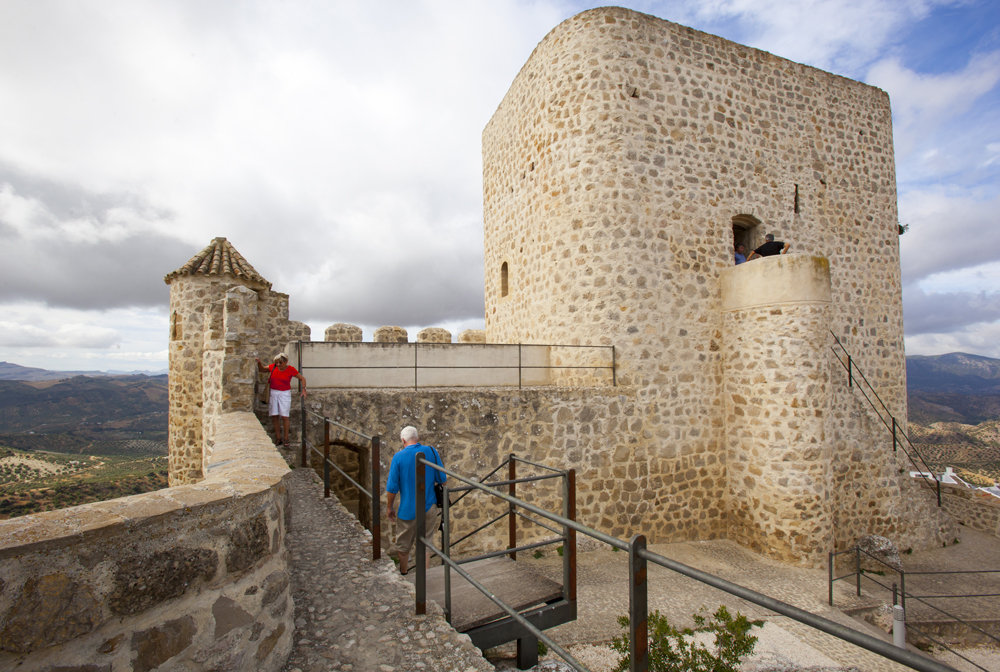
Inserta aquí una nueva sección
From Olvera we'll set off for Setenil de las Bodegas. One of the many good reasons for visiting Setenil is to see the remains of the old citadel (Alcázar) (12th c.). The keep is a short walk away from the church of Nuestra Señora de la Encarnación. Little remains of the walls and the 27 towers that once surrounded the town: a well and passageway dug into the stone to obtain water when under siege.
This map will help you on your visit to Setenil (https://turismodesetenil.com/wp-content/uploads/2019/04/guia-setenil-turismo-mapa.pdf). We'd recommend having lunch here at one of the local restaurants to enjoy the local gastronomic traditions. Here are some suggestions (https://turismodesetenil.com/index.php/donde-comer/).
On the way back to Olvera, you can stop off at Torre Alháquime and take a walk around the old quarter. The old defensive system of La Torre, as it's called in this mountain village, was used to support the castle of Olvera. Remains of the old structure include parts of the fortress and the keep. Entrance is free. There are many legends about the origins of Torre Alháquime, secret passageways to the river Guadalporcún, buried treasure, tales of bandits... Go to the 'Chema', 'Pepín', 'El tapeíto' bars or 'Las vegas' restaurant and they'll give you all the gory details!
We'll head back to Olvera for dinner and a good night's sleep. We really like the dishes on offer at the hotel Sierra y Cal, although you're guaranteed a great meal at any other place in the town, such as the hotel restaurants Fuente del Pino, La Bodega, El Puerto, Restaurante de Alfonso... If you fancy staying somewhere else, here are some other options (http://turismolvera.com/es/olvera/donde-dormir/).
Hiking along the Via Verde de la Sierra (https://www.fundacionviaverdedelasierra.es/atractivos/) and seeing griffin vultures soaring above the natural reserve of Peñón de Zaframagón are good alternatives if you're looking for something closer to nature.
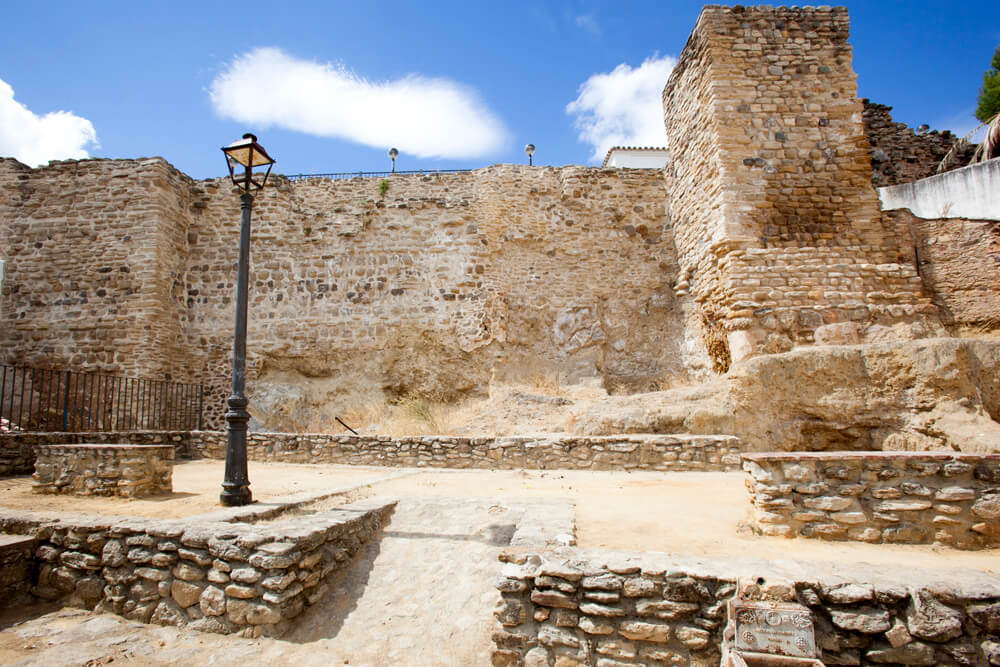
Take advantage of the fact that you're in Olvera to have breakfast, with some toast made from locally made bread with a drizzle of locally produced olive oil. (https://www.cadizturismo.com/es/experiencias/oro-verde-gaditano). There's nothing better than a blast of energy and green gold to face the day. If the slopes you went up yesterday were a shock to the system, today your calf muscles are going end up looking like footballs.
Drive along the A-384 and follow the signs to Zahara de la Sierra, our next destination (https://www.cadizturismo.com/es/municipios/zahara-de-la-sierra). From far away you'll start to see the outline of the village, with a homage tower (13th c.) looming over everything. This and a few stretches of wall are what remain of the defences that protected the medieval town.
The village, like many in this area, winds its way downhill, with its whitewashed houses standing out from the surrounding landscape. To reach the castle, you have to enter the old part of the town and go up a steep stony slope that forms part of the charm of the experience. You'll pass by the interpretation centre of the Medieval Town, built on top of the remains of a 15th century church, which may have also been used as a mosque, form part of the centre. The museum has displays and explanations of the archaeological finds located in the area. Then you can head up to the tower and see the views from the highest point in the village.
Zahara de la Sierra is the starting point for a number of interesting routes for hiking, canyoning and climbing, etc. The most famous one is the Garganta Verde (https://www.cadizturismo.com/storage/app/media/RUTAS/Sendero%20Garganta%20Verde/LaGargantaVerde.pdf). You have to ask for permission to do canyoning and to get to some parts of the route. We recommend contacting local companies that specialise in active tourism for this type of route. Discovery, Villaluengaventura and Cumbres del Sur are some of the firms to be found in the area. Ask the tourism office to organise your visit to Zahara. The office of the town council is also very helpful.
You can also enjoy the unique sight of the only remaining urban forest of Spanish firs (https://www.dipucadiz.es/provincia/cadizQR/Zahara-BoquePinsapos), prehistoric relics that can now only be found in the Sierra de Grazalema Natural Park, which is where we are now. There is an interpretation centre of the Spanish fir forest nearby.
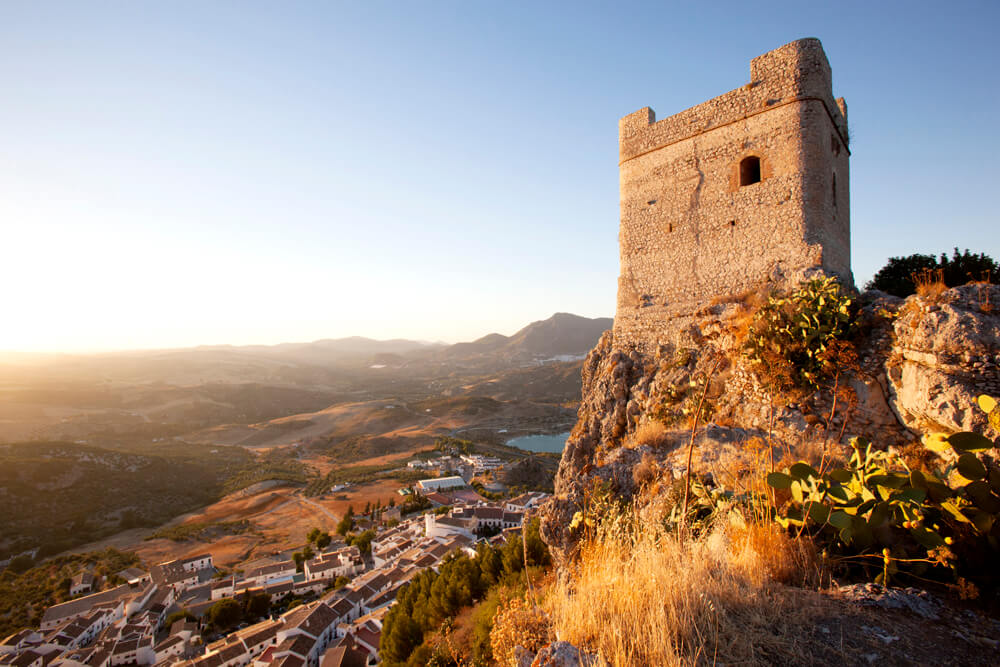
Now we're off to Bornos (https://www.turismodebornos.com/), a lovely highland town with a surprisingly rich architectural heritage. We'll stop off at the castle palace of Los Ribera. Moorish in origin, an important local noble family had the castle transformed into a palace in the 16th century. The remains of the original fortifications, the castle of Fontanar, consist of the keep and parts of the wall. The palace is an amazing work of art in its own right; an elegant structure, topped off with gardens in the Renaissance style where many different plants grow. As if that wasn't enough, you'll find a loggia in the garden, which according to our dictionary, is “an outdoor gallery with arches on columns, roofed and open on one or both sides. The Pompeian style niches were decorated with statues of mythological subjects that can now be found in the Casa de Pilatos in Seville, which is owned by the same family that converted the castle into a palace.
The castle can be visited mornings and evenings. The Bornos tourism office is right at the entrance, near the town hall and the parish church of Santo Domingo Guzmán (16th c.), close to the Casa Ordoñez and other buildings that are well worth a visit.
The environmental heritage of Bornos includes a natural stop-off point at the end of the reservoir. The waters from the river Guadalete help to make these wetlands an important local feature where many protected species nest and rest for the winter. Bornos, and this area in particular are wonderful locations for birding.
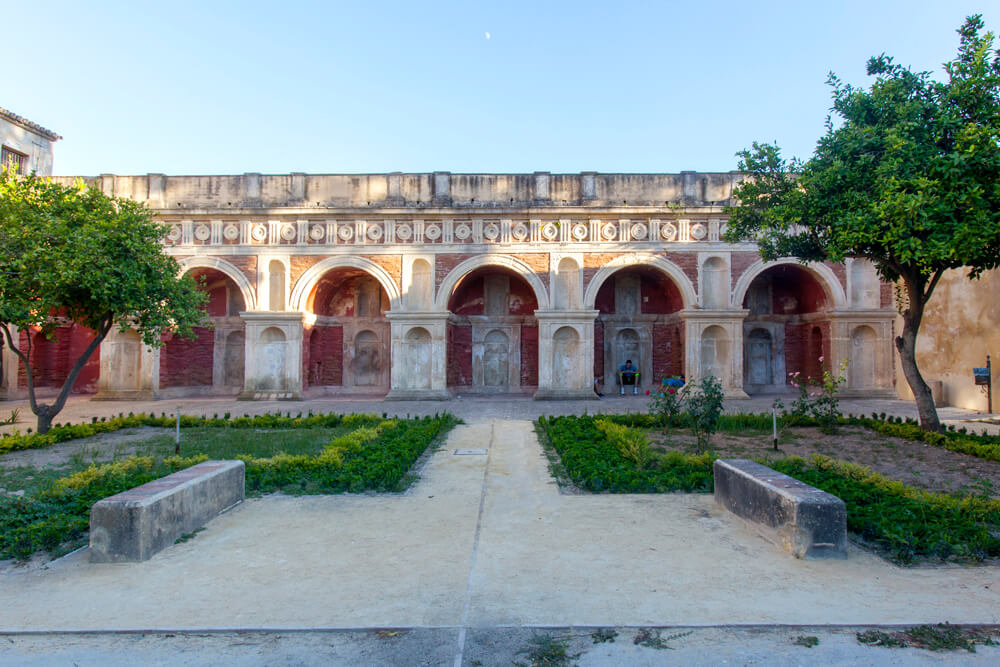
Castle of Fatetar
We'll stay in the Sierra de Cádiz for now. There are lots of castles and fortifications to be seen round here. But we won't be able to see them right now because they're difficult to get to, they're on private land and because there are only 24 hours in a day no matter how much we try to stretch them out: the castles of Aznalmara (Benaocaz), Fátima (Ubrique), Gailir (Puerto Serrano), Tempul (Algar), Matrera (Villamartín)...
For now, we're off to Espera, a small farming town. The Castle of Fatetar (10th c.) (http://www.webespera.es/p/castillo-de-fatetar.html) rises majestically above the top of a ridge. It's not known when it was built. There are Roman, Visigoth, Arab and Christian remains. It was partially destroyed during the earthquake of Lisbon (1755), then restored by the French Napoleonic army (1810), abandoned for many decades and finally restored some years ago. Near the castle you can find the hermitage of Santiago (15th c.), which completes the current layout of the old defensive structure. There's no need to organise visits at the tourism office if you want to go and have a look inside the castle.
The archaeological sites of Carissa Aurelia and Esperilla and the archaeological museum (https://www.facebook.com/mae.museoarqueologicodeespera) are also well worth a visit if you want to see the very important finds there. Entrance to the site is free. The museum has different opening hours for summer and winter. Call 691369885 for more information.
We'd recommend visiting the inland water complex of Espera. It's a nature reserve made up of three lagoons with a wealth of flora and fauna, including several endangered species. There is a signposted trail of low difficulty that you can do if you have enough time.
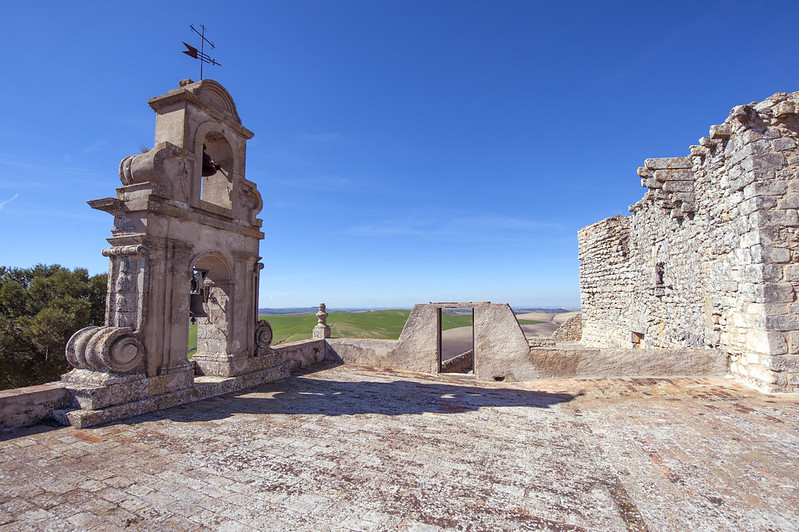
Castle of Arcos
Our journey now takes us to Arcos de la Frontera, the last stop in our tour of the Sierra de Cadiz. The present shape of the castle is the outcome of modifications made in the 14th and 15th centuries, although the castle was originally a military stronghold. It's really quite spectacular. The castle is privately owned, so normally you can't go inside. However, an agreement was made by the owner and the town government to organise guided visits four times a year. Ask about the scheduled dates at the tourism office and put our name down for a visit. There is a waiting list (tel.: 956 70 22 64). What can be seen from the outside is the remains of the Puerta de Matrera, the only gate left of the ones in the old wall (http://www.turismoarcos.es/index.php/es/2013-01-31-06-37-23/2013-01-31-06-54-33/puerta-matrera).
Arcos is always well worth a visit anyway just to see its rich heritage and the amazing views from La Peña, a natural monument formed by the erosive action of the river Guadalete (https://www.andalucia.org/es/arcos-de-la-frontera-espacios-naturales-pena-de-arcos-de-la-frontera ). Guided visits are often organised to see the architectural and natural heritage of Arcos (http://www.turismoarcos.es/index.php/es/que-hacer/agenda-de-actividades).
In the high season, the reservoir of Arcos is a great place to do water sports (http://www.nauticosierradecadiz.com). There's even a small beach with its own bar and lifeguards.
We've reserved a room at the Parador de Arcos, in the Plaza del Cabildo. At the top of La Peña, opposite the town hall, in the Basílica Menor de Santa María de la Asunción, near the castle. In our opinion, a beautiful place with a beautiful view. But each to his own, and if you prefer something different, here's a very complete list of accommodation on offer at Arcos.
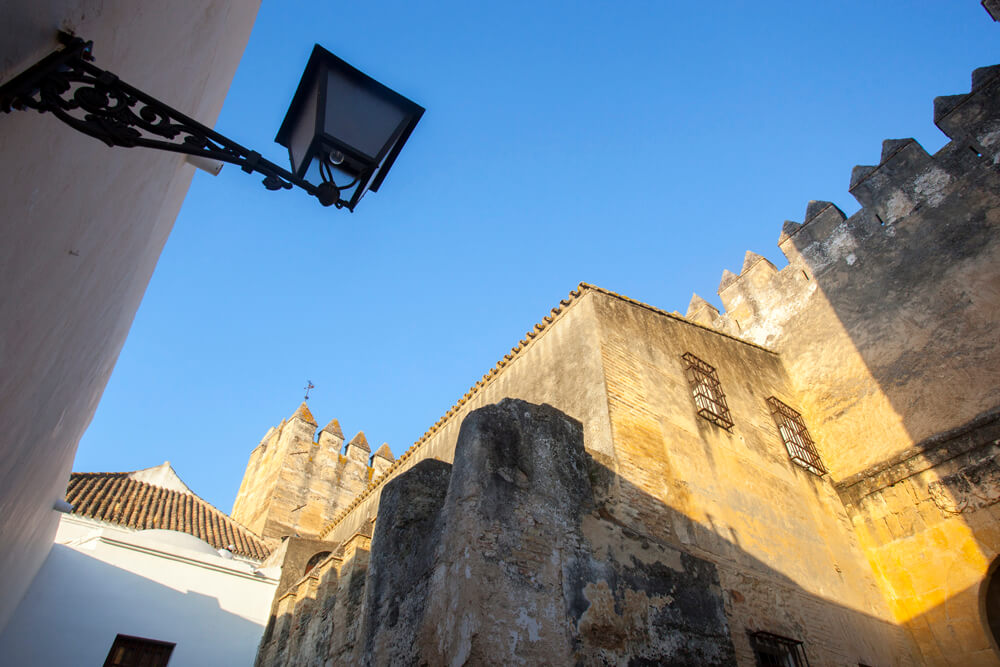
Castle of Santiago
Today we're off to Sanlúcar de Barrameda. We're going to the castle of Santiago (15th c.) (https://www.castillodesantiago.com/). It's located in the Barrio Alto of the city. The mouth of the river Guadalquivir and the surrounding countryside were (and still are) visible from the castle, which is very well preserved. The castle is open to visitors every day, mornings and evenings. Entrance is 16 euros. It includes a visit to the castle museum and an exhibition on the first circumnavigation of the globe, the fifth centenary of which is being celebrated this year. Call 956923500 for more information. It also offers night time visits and the largest escape room in Europe (so they say). Fancy seeking some clues and finding the treasure of Molucas? (https://sklogic267847675.wordpress.com/). Call 685 014 356 for reservations.
Sanlúcar has a lot to see and enjoy. It's almost unfair to impose our preferences because everything there has its own charm and history (http://www.sanlucarturismo.com/monumentosylugaresdeinteres/). A walk in Sanlúcar is good for the soul, so come back and take some time to enjoy it in all its splendour. We're very fond of all things natural like flowers and gardens, so we're off to the gardens of the Palacio de Orleans (now the offices of the town government). There's a trail called the Cerro del Águila, which is great fun to do by bike. It has a few surprises along the way, like the lagoon of Tarelo, where you can see flamingos, egrets, spoonbills... (https://www.juntadeandalucia.es/medioambiente/servtc5/ventana/mostrarFicha.do?idEquipamiento=19955).
Our plan is to have lunch somewhere in the Plaza del Cabildo and try some of the produce grown on their own allotment. We think the food there has a very special flavour. What do you think?
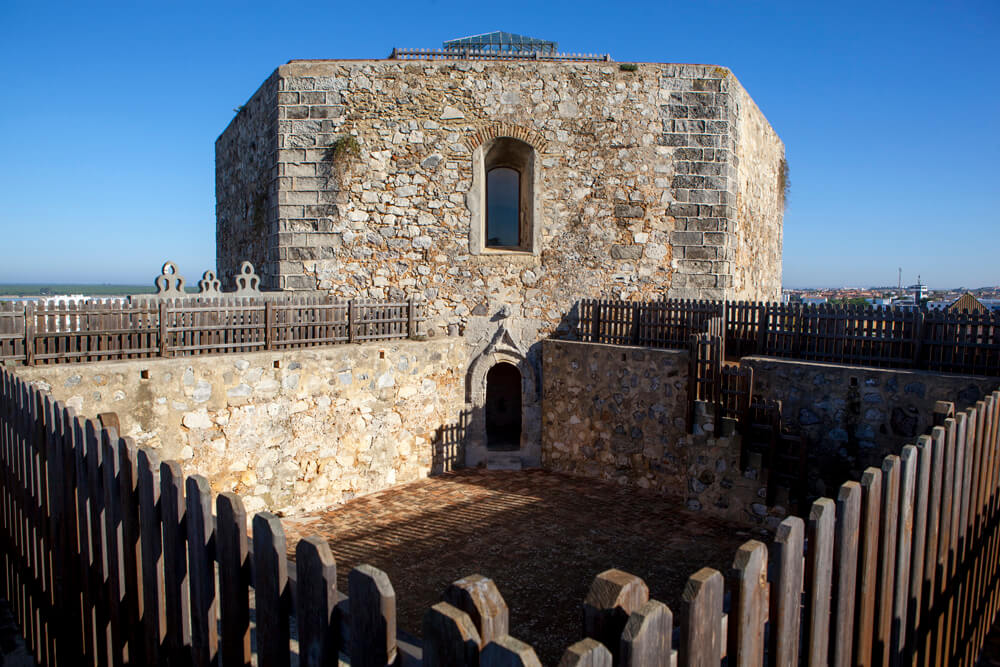
Castle of Luna
After lunch, we'll set off to Rota. The castle of Luna (13th c.) was built on a Moorish frontier post (11th c.) and just like the castle in Sanlúcar, there are stories that Ferdinand and Isabella stayed here when they visited the city. Throughout its long and varied history, it has been used as a family residence, hospital, school and now, after careful restoration, it is the seat of the city government. The castle patio can be visited mornings and evenings (mornings only on Sunday). In summer, the tourism office organises guided visits that include the castle and other monuments of Rota. Highly recommended. Call 956 84 63 45 for opening times and routes.
Remains of the old walls of are still visible in some places. First used to separate the frontier post from the rest of the settlement, they were then reinforced as part of a defensive system. Until recently, the only visible gates were the Puerta del Mar, with its lighthouse, and the Puerta de Regla. Recent work has uncovered the old town gate, which was found under a government building in the Plaza de España, along with hidden sections of the town wall.
If you want to know more about the culture and traditions of the town, then you'll enjoy a visit to the Mayetería recovery centre (parque del Mayeto). Mayetería is a type of farming once practiced in the town. The farmers were called mayetos. They lived in small, unusually shaped houses, examples of which have been recreated in the centre. Inside, you can see tools and equipment used in mayetería and teaching resources. There's also a space for chameleons. They still live in the province of Cadiz, which is now one of their few remaining habitats on the Iberian Peninsula.
We'll spend the night at Rota. If you come here in summer, your stay here may well coincide with a tapas route designed to promote local gastronomy.
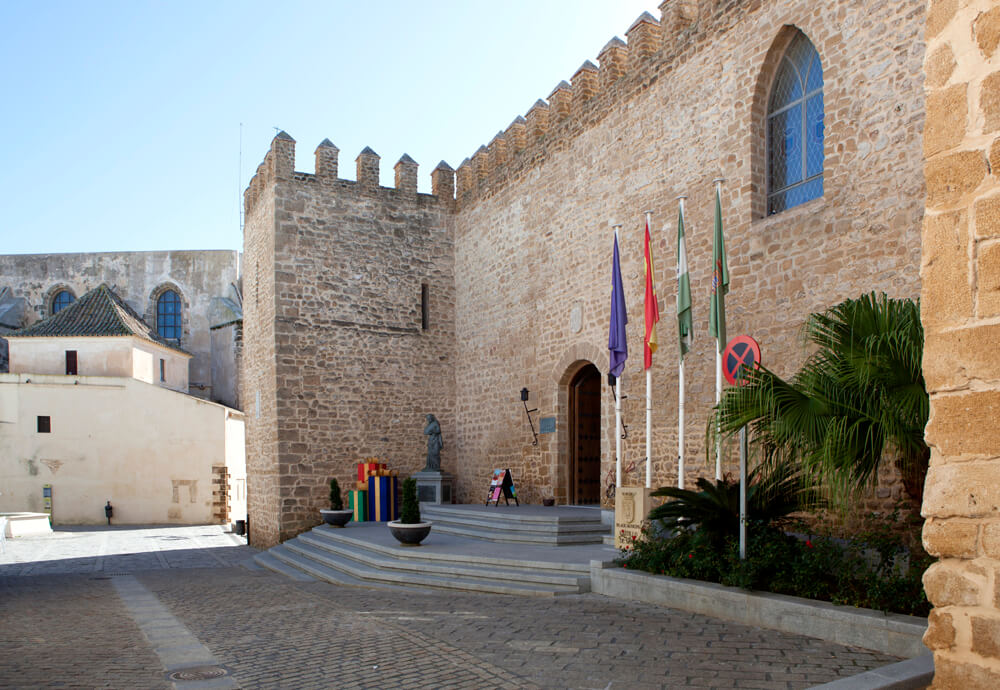
ITINERARY AND ROUTE
| Kilometres: 220 Km. |
| Estimated driving time: 3 hours y 46 minuts. |
| Recommended number of days: 4 days. |
| Attractions: culture and nature. |
| See route in map: Google maps |
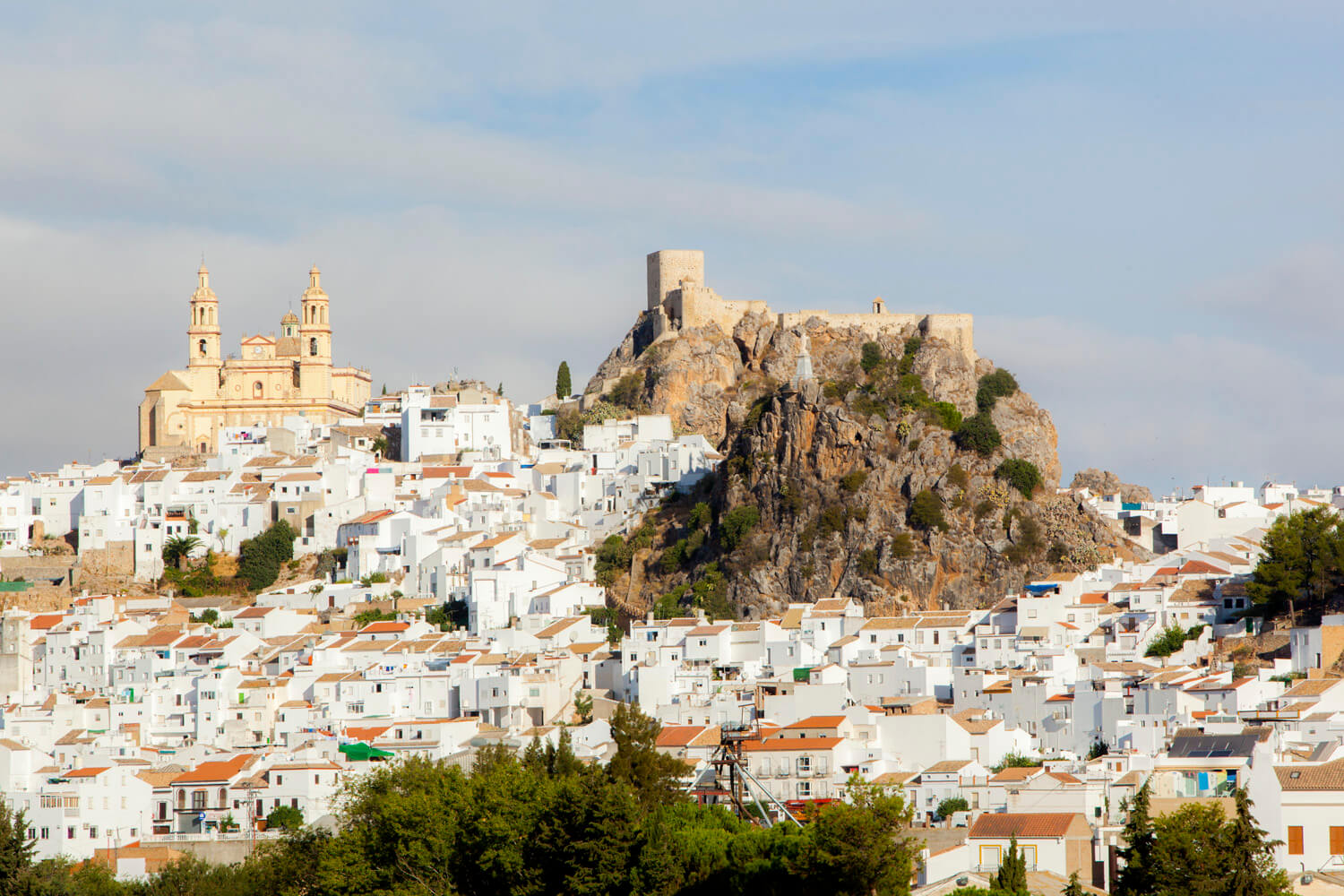
Castle of San Marcos
Yes, yes, there are lots more castles, walls, towers and lots more of everything to see in Cadiz. It's all been arranged. Visits to the citadel of Jerez (https://www.cadizturismo.com/es/experiencias/jerez-de-la-frontera-siente-el-arte), the castle of Trebujena (https://www.cadizturismo.com/es/experiencias/las-esencias-del-buen-comer-y-beber) and the castle of Chipiona (https://www.cadizturismo.com/es/experiencias/la-luz-de-la-costa) have all planned as part of our travels around the province.
Now we're off to El Puerto de Santa María, and we're keen to get going because El Puerto is a tonic for the body and soul. This time round we'd like to see the castle of San Marcos, probably one of the most beautiful and best conserved castles of all the ones we've seen up till now. The building was originally a mosque, and you can still see the quibla and the mihrab. After the conquest, it was converted into a church - fortress (13th c.). Its many illustrious residents include Christopher Columbus, who stayed here while he organised the expedition that would take him to America. Its long history is reflected in the many changes and reforms that the castle has undergone, but which at the same time have given it ever greater bearing and character.
A visit to the castle costs 8 euros. We'd recommend spending just two euros more for the guided tour that will show you all the castle's secrets. And if you're a wine lover, top off the tour with a visit to the nearby wine cellar and sample some of the wines of Jerez. Opening times are morning and evening, apart from Sunday (mornings only). You can buy the entrance ticket there and then, but we'd recommend making a reservation beforehand (https://castillodesanmarcos.com/visita/).
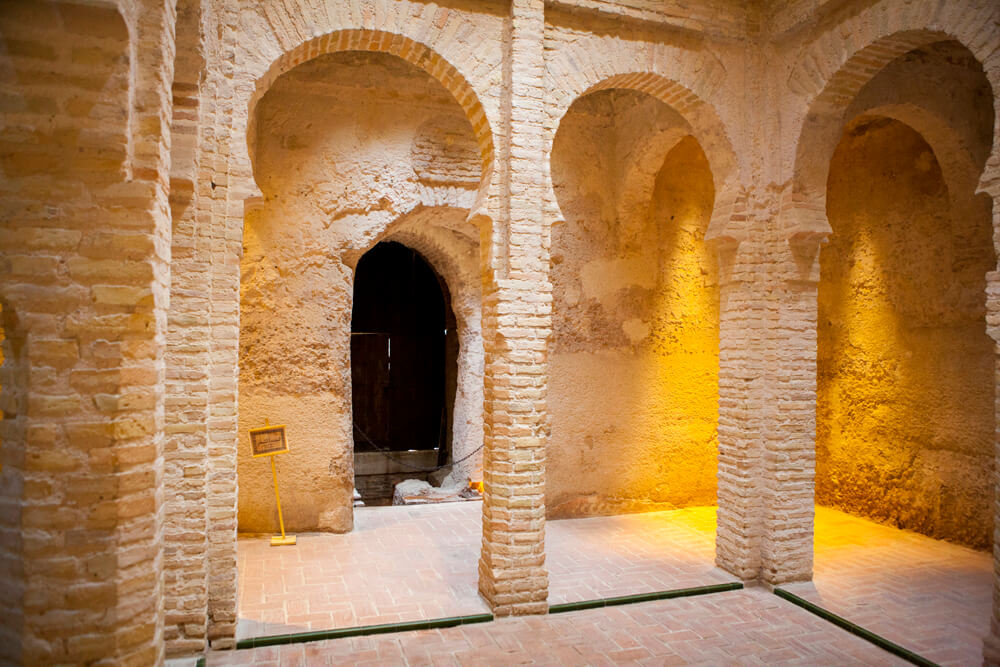
Castle of Guzmán El Bueno
If we had one more day, we wouldn't hesitate to take you to see the castle of Gigonza (13th c.), in San José del Valle (https://sites.google.com/view/castillodegigonza). Built on an ancient settlement of the Turdetani (a pre-Roman people), its origins go back to a spring of sulphurous water that was believed to have curative properties. Next to the castle, you can in fact see the remains of a very prestigious 19th century spa, which was especially popular in the early 20th century. The castle itself is very well preserved. See the times for guided visits in the website (https://sites.google.com/view/castillodegigonza/contacto?authuser=0). Gigonza Aventuras offers dramatised visits for school groups. To arrange for one, call 675 18 40 87
There are also remains of ancient castles in Medina Sidonia, Benalup Casas Viejas and Alcalá de Los Gazules. We'll see the castles of San Sebastián and Santa Catalina in another visit, along with Sancti Petri (Chiclana) (https://www.cadizturismo.com/es/experiencias/la-luz-de-la-costa) and the castle of Conil (https://www.cadizturismo.com/es/experiencias/la-mar-de-cultura). Special mention should be made of the castle of Vejer (10th c.), where a large part of the defensive wall (15th c.) that protected the old town is still conserved. Entrance is free and there you can see some amazing views of the entire region of La Janda. CLOSED FOR REPAIRS
The visit we're definitely going to make today is the castle of Guzmán El Bueno (10th c.) in Tarifa. It owes its name to Alonso Pérez de Guzmán, warden of the castle, who preferred to sacrifice his son before surrendering Tarifa to the Moors (13th c.). It's located on a hilltop near the sea, and remains dating back to the Bronze Age have been found there. The castle layout is octagonal and a notable feature is the flanking tower that protected the main castle gate.
Besides the castle, parts of the old town walls and towers of Tarifa can still be seen. There is a route where you can walk along the town walls. Ask at the tourism office if this route is available when you're there. You can also ask for information about the opening hours of the castle. It's open morning and evening, although this may change according to the day of the week and the season. Call 687 788 466 for more details.
Then dive into the town centre. Lose yourself in its streets. Enjoy the atmosphere, the colours, feel the mixture of different cultures that give life to the city. We'll leave the rest of the evening to you. We'll see you tomorrow morning.
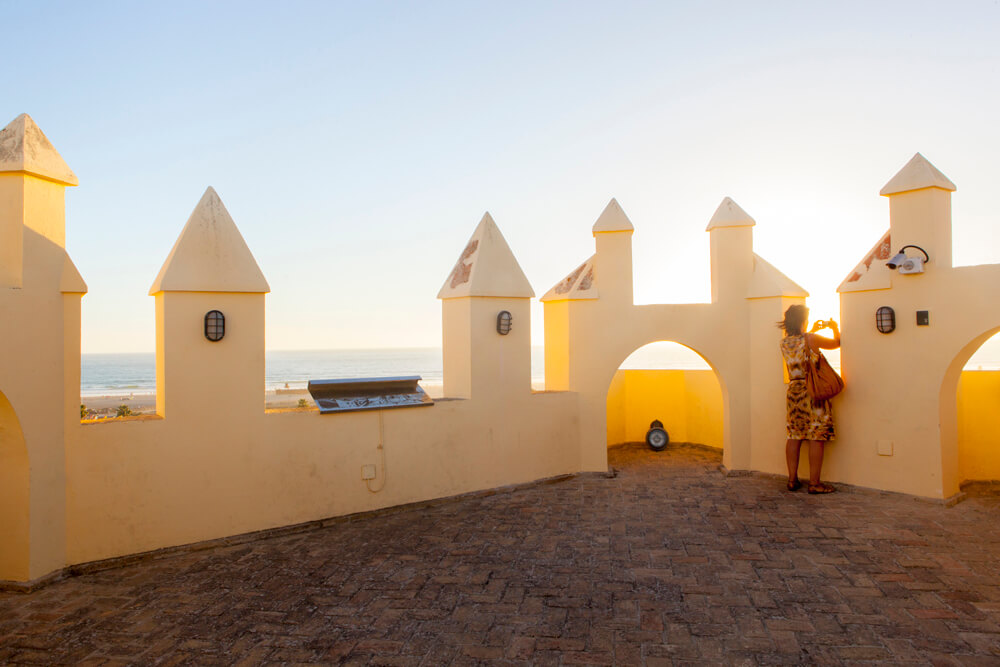
Castle of Castellar
The next stop should be obligatory for anyone who wants to take some time out from the daily grind. The name, Castellar de la Frontera, or castle on the frontier, is a clue to what we'll find here. The castle is on a hilltop outside the village, in an area called El Castillo for obvious reasons. It was built in the 13th c. Its purpose was to defend the kingdom of Taifas, in Algeciras.
You can see everything from El Castillo, right in the heart of the Los Alcornocales Natural Park and the Campo de Gibraltar. The walled enclosure contains the citadel and some typical houses of the old town of Castellar, which spill down the hillside like drops of water, to make furrows as if by gravity. The strength and power of the castle contrast with the delicate beauty of the flowers that decorates the white facades.
Visiting the castle of Castellar is not just taking a walk around a monument. It's experiencing a monument, feeling that you are part of it. At Castellar we've got the chance to spend a night at one of the houses in the town or in the citadel (Alcázar), which has been renovated and converted into a marvellous tourist complex where it's easy to feel that time stands still (http://www.tugasa.com/hotel12_1.php). The hotel itself promotes experiences to discover the natural surroundings with packages that combine accommodation, routes, adventures and gastronomic menus.
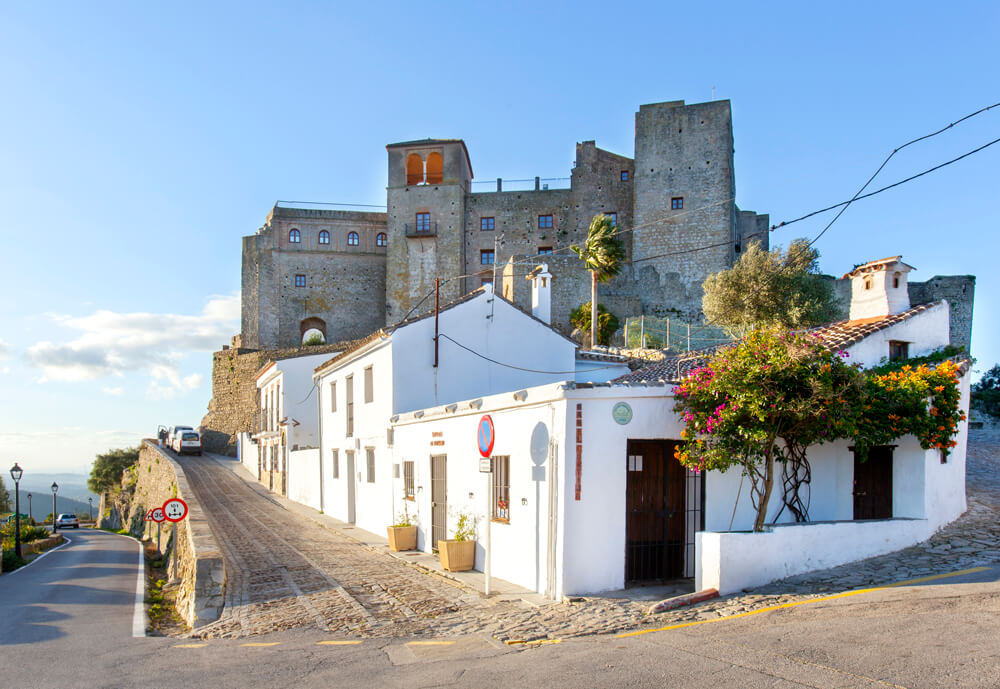
Los Alcornocales Natural Park
Anytime is a good time to come here, although autumn, when you can hear the mating call of the deer, or summer when the cork oaks are stripped of their bark, are very good dates for combining with our visit. The route of the monarch butterfly is beautiful in spring. A visit and overnight stay at the estate of La Almoraima (https://hotellaalmoraima.com) is also highly recommended. The hotel is in an old 17th century monastery, in an estate that occupies more than 14,000 hectares of the Los Alcornocales Natural Park, and there you can go horse riding, go on a 4x4, do some hiking... Don't leave without going up the chapel tower.
You can get more information about all the options for active tourism at your hotel, the tourism offices of Castellar (tel. 956 236 620 and 956 693 001) or by asking directly at the offices of companies operating in the sector (http://www.turismocampodegibraltar.com/castellar/que-hacer/Rutas-Guiadas-en-Castellar/).
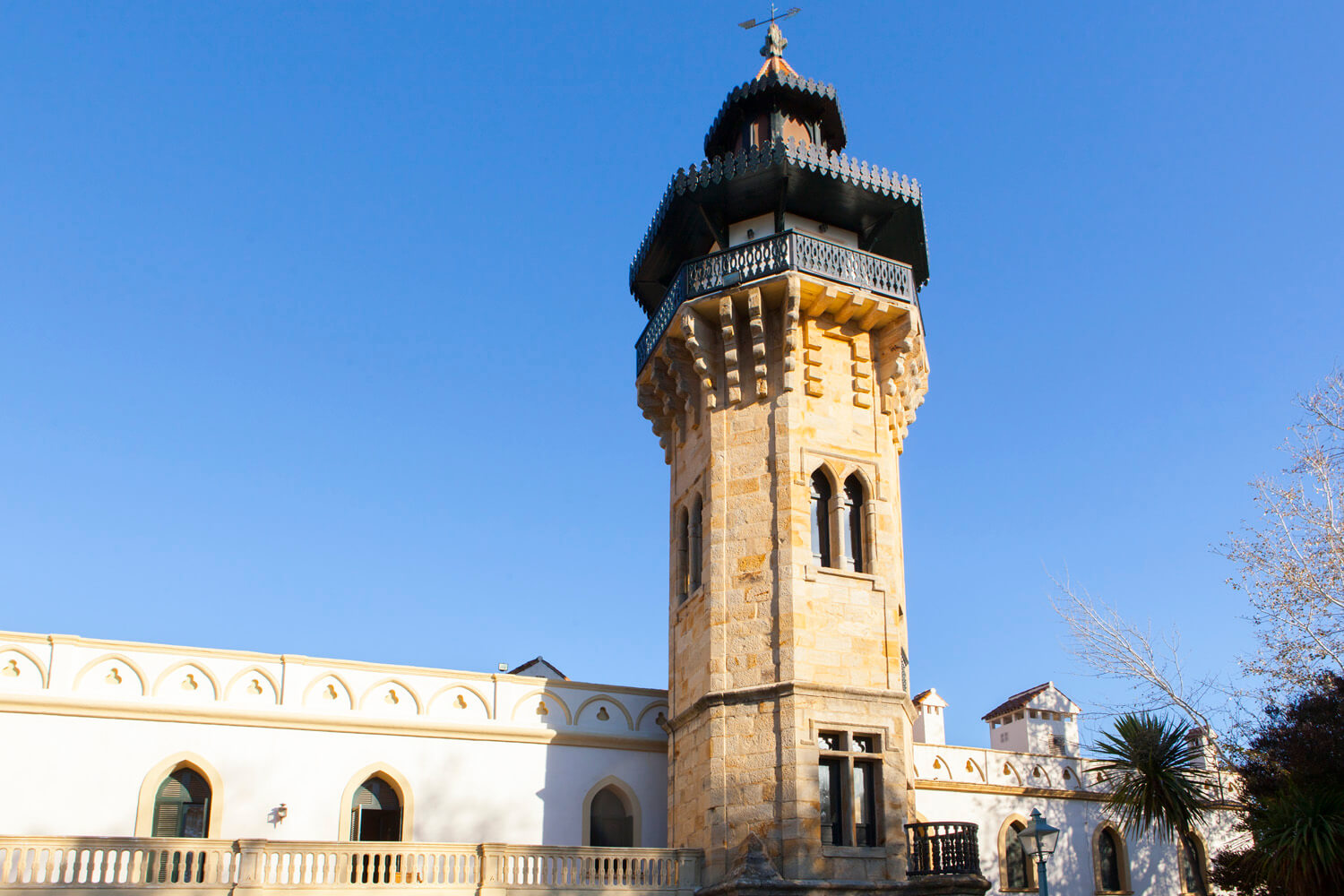
Castle of Jimena
If you go on a trip to discover the castles of the province of Cadiz, there can be no excuses for not making a visit to the castle of Jimena de la Frontera (https://www.jimenadelafrontera.es/conjunto-monumental-del-castillo-de-jimena-de-la-frontera). Its current shape dates back to the 13th century, although the building itself goes back several centuries.
The castle of Jimena is located at the topmost point of the town, on a hill with views that go as far as the neighbouring continent. Pure strategic planning. You can leave the car in a nearby car park. Inside the castle walls there are remains of a Roman temple and the entrance gate to the ancient city of Oba. The medieval remains consist of the citadel, the keep, a flanking tower and several wells. Entrance is free and it's open almost all day. This map can help you organise your visit to the castle of Jimena (https://www.jimenadelafrontera.es/component/phocadownload/category/28-turismo?download=80:folleto-castillo).
At the feet of the town, next to the river Hozgarganta, there is a track that you just have to do to see the beauty of its surroundings and the culture heritage. The course of the river is the only one left in Andalusia that has not been altered by man. It has not been modified by human action in any way and so conserves its natural features and all the flora and fauna associated with the Los Alcornocales Natural Park. There are several starting points for the track. We chose the one at Pasada de Alcalá. During the walk, you'll see the remains of the canal of the Real Fábrica de Artillería (18th c.). The energy caused by the flowing water was used to move the bellows of the forges where armaments were made. It was later used as a mill.
There isn't much shade along the way, so choose the right time and date to do the walk. Spring and autumn are always good options. But be careful because heavy rains can make the river rise very quickly. You'll be grateful for the sunshine in mid-winter and night-time walks and water routes are organised in the summer. Ask at the local tourist office (tel.: 673 31 47 80) or at the association 'Senderistas del Castillo' if they have a visit planned on the date of your trip (tel.: 628 858 728 https://www.facebook.com/Senderistas-del-castillo-de-jimena-266431337041173/ (Trail leaflet: https://www.jimenadelafrontera.es/component/phocadownload/category/28-turismo?download=72:folleto-ro-hozgarganta-ampliado-baja-resolucin o https://www.cadizturismo.com/es/rutas/sendero-del-rio-hozgarganta )
Jimena is also a very welcoming village where you can spend the final night of this experience. But not the only night. There'll be more. We've got lots of plans to show you everything we had to leave out this time round. And you know we'd love to see you here again.
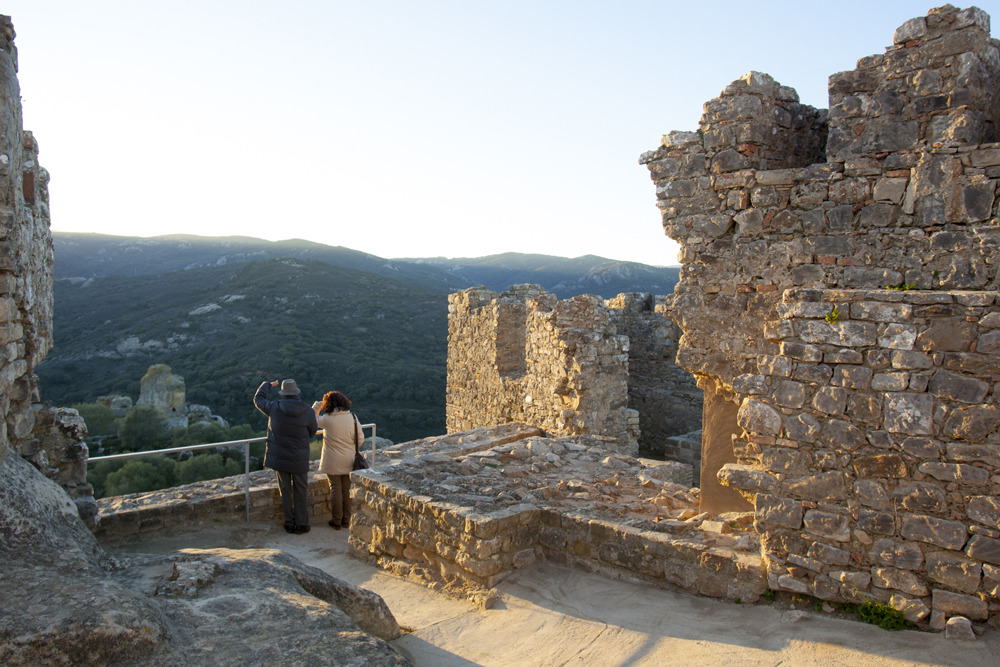
Kilometres: 406
Estimated driving time: 6,5 hours
Recommended number of days: 6
Attractions: Culture and nature
See route in map: Google Maps
